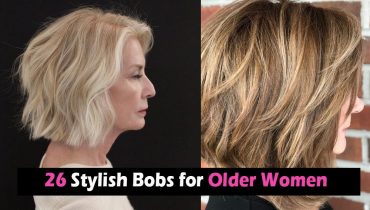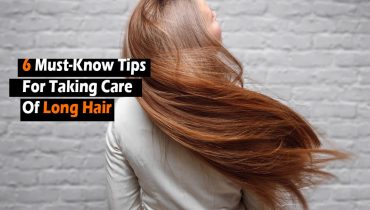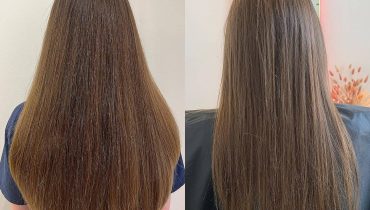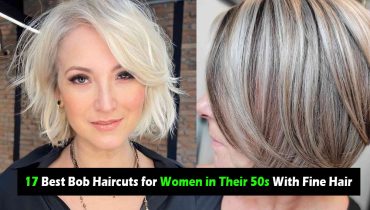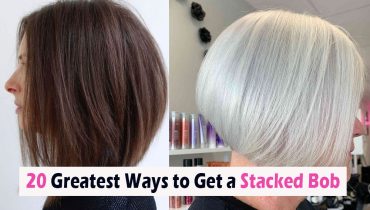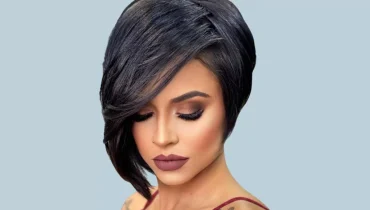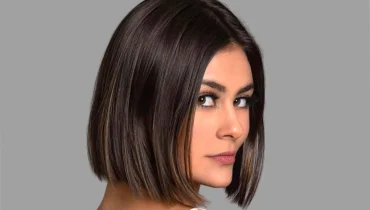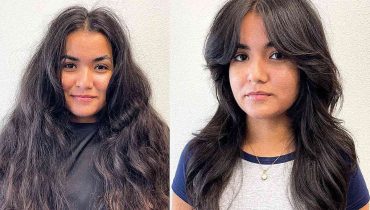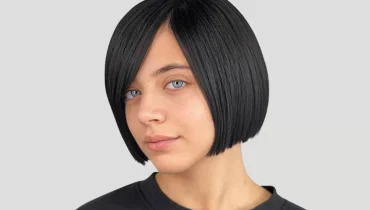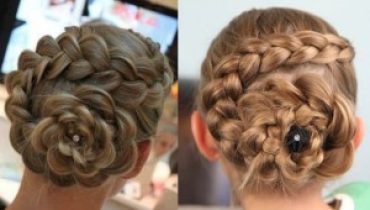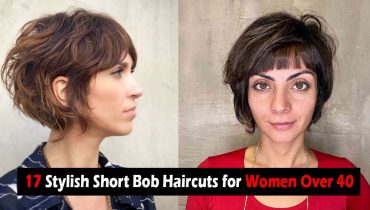How to Prevent Split Ends: A Surprisingly Easy Method

Posted November 9, 2022 by: Admin
Split ends cannot be “fixed”, only cut off. But with a little care you can put an end to them. There are three types of damage that can cause split ends: mechanical, chemical or environmental. Luckily, all of these can be minimised or even eliminated.
What causes split ends?
Heat is the biggest culprit for mechanical damage from rubbing, pulling and tearing of hair when shampooing and drying, ranking second only to mechanical threats. Chemical damage comes from hair coloring, relaxers, and relaxers. Don’t do the last two at home!
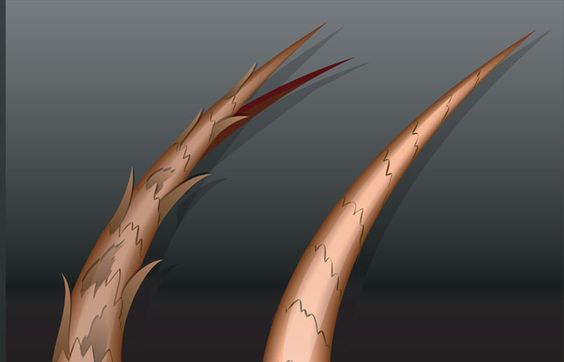
Says Blake Reed Evans, a stylist at Shear Art Salon and Spa in Tampa, FL, “Every time you color or lighten your hair, you lose 10-20% of its protein. (That’s why she uses Redken Chromatics hair color, which strengthens hair twice as much as color.) Environmental damage, says Evans, comes from exposure to summer sun, sand, and salt water, which calls for special preventative measures.
How to prevent split ends
Follow these 5 steps to TLC and make split ends a thing of the past:
1. Turn down the heat
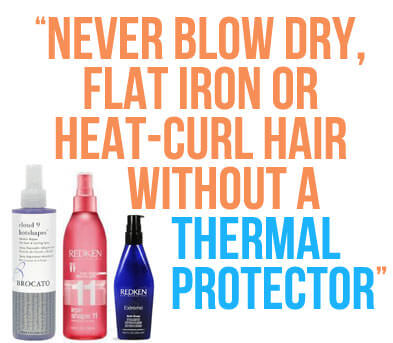
Jessee Skittrall, an American Board Certified Colorist (ABCH) and owner of Absolut Hair Salon in Everett, WA, says heat styling is all about math: “Water boils at 212 degrees Fahrenheit, chicken cooks to 350 and the plates can reach 450 degrees.
Turn the heat down starting at 210 and never going higher than 330 degrees Fahrenheit, which Evans says will “blow up the cuticle and cause the color to fade.” Never blow dry, flat iron or heat curl your hair without a heat protectant. Skittrall recommends Brocato Cloud 9 Hotshapes, while Evans uses Redken Anti-Snap (with protein) for blow drying and Iron Shape 11 for use with hot irons.
2. Put the protein back
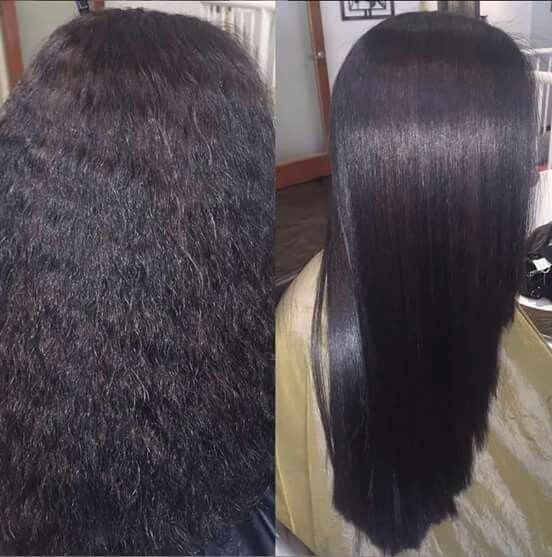
Kristin Green (ABCH), owner of Tangles in Lancaster, Pennsylvania, agrees that heat, in addition to chemicals like hair coloring and keratin treatments, creates a “decision situation,” especially when done on House. Air-dry your hair when you can, and if you color it at home, use gentle products that are 1-2 shades of your natural color. “After chemical treatments, it’s very important to replenish what the hair is missing (moisture and protein),” says Ella Green. “The pH of your hair should be between 4.5 and 5.5.”
Chemical treatments are best left to the professionals: always ask how they protect your hair, especially if they lighten it with bleach or use anything that straightens hair. To keep hair healthy, use products balanced in protein and hydration with the right pH. (You can test them with pH test strips.) The best option: Get a custom in-salon treatment like Redken Chemistry, which has 10 times the power of at-home deep conditioners. For home care, Green recommends SOMA Organic Haircare Leave-In Conditioner, which has an ideal balance of moisture and protein.
3. Shampoo and detangle the right way
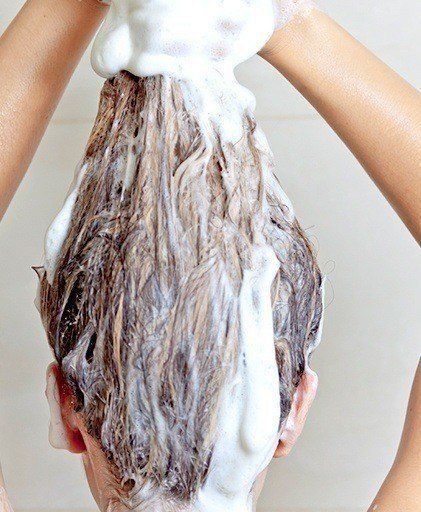
According to Brenda Amaral (ABCH), owner of Gwen Mireille Salon and Spa in Raynham, MA, one of the main reasons for split ends is improper use of shampoo. (It is always better to use cold or lukewarm water). “The cuticle layers of the hair are as strong as the scales of a fish,” says Amaral. “If you rub two fish together, what happens? Scales everywhere! After exfoliating the scalp, gently work the shampoo through the mid-shaft and ends; do not rub Rough drying with towels will also lead to breakage and split ends.”
Adds Green, “After shampooing, use your fingers in the shower along with the conditioner to gently “rake” your hair. This will allow most knots to be removed. Then wrap your hair in a soft towel. You can treat yourself at home using extra virgin olive oil or coconut oil. Apply to clean, dry hair; leave it on all night and apply shampoo and conditioner in the morning.”
Long or curly hair is particularly prone to split ends, says Skittrall, because the scalp’s natural oils cannot travel more than 5 to 7 inches up the hair shaft, especially along the twists and turns of the curls. . As a result, the longer, curlier or thicker the hair, the drier the ends will be and the more likely they are to break. (Since shampoos remove what little oil there may be near the ends, this hair is exceptionally dry.)
Skittrall has a home app for that! “When you wet your hair in the shower, grab it like you’re going to create a ponytail,” she explains. Apply conditioner along lengths and ends; I personally love the Brocato Splashh Conditioner. Then apply your favorite shampoo correctly on the conditioner, focusing on the scalp to the ends. Rinse well, then condition the ends again. Comb through the conditioner with a wide tooth comb and don’t rinse until you’re done showering. Over time, your hair will be less frizzy, look shinier and dry faster, and you’ll avoid split ends.”
4. Always use TLC when detangling
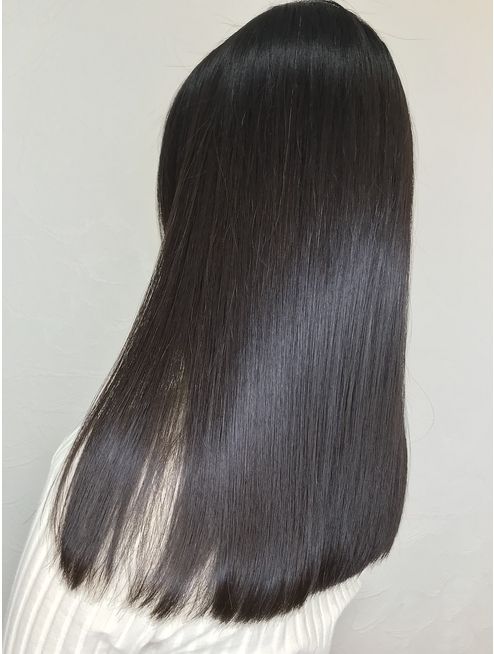
Always use TLC when detangling. dry your hair; do not rub it roughly. Use a leave-in conditioner to protect your hair and even out porosity to prevent styling products from penetrating the cortex where they don’t belong. While last year’s advice was to use a wide tooth comb and avoid brushing wet hair, today there are a number of new brushes to safely detangle hair. Jessee Skittrall recommends Tangle Teezer, which is also highly rated on Amazon. Always work from the ends up, in increments.
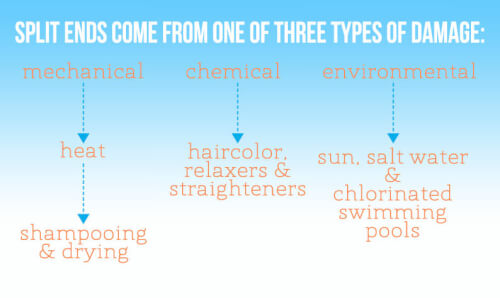
5. Minimizes the effect of the sun, salt, and the sea

When it comes to environmental damage, the sun, salt water, and chlorinated pools work against your hair. Evans teaches her clients how to care for and protect their hair in the harsh Florida of hair!
“Any time you’re going to be at the beach or poolside, dampen your hair with tap water and use a daily leave-in conditioner,” she advises. “This creates a barrier between your hair and salt, chlorine and even UV rays from the sun. If you have hard water or well water in your area, try Redken Hair Cleansing Cream Shampoo and use once a week. It melts the hair and removes mineral buildup while protecting hair color.”
Lastly, avoid styling products that contain salt. Why is there salt in your hair gel? It is used to thicken products that are mostly water. Green says, “Look for products that don’t contain sodium chloride…table salt. It will leave your hair dry. Check ingredient labels and become an expert!”
In short, make regular cuts and treat your hair fabric like fine silk, not polyester, and split ends will be a thing of the past. Now that you know how to prevent split ends, click here for the ultimate guide to managing frizzy hair.

